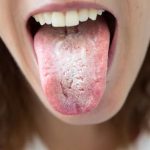 Candida albicans fungus affecting the mucous membranes and skin; causes thrush.
Candida albicans fungus affecting the mucous membranes and skin; causes thrush.
A yeast-like fungus that may infect the vagina or throat.
A type of fungus which causes mycosis.
Yeast like fungus that may infect the mouth (as in thrush), skin (as in diaper rash), intestines, or vagina. Rarely, invasion of the bloodstream may occur. Treatment is with antifungal drugs.
A genus of yeastlike fungi (formerly called Monilia) that inhabit the vagina and alimentary tract and can, under certain conditions, cause ‘candidiasis. The species C. albicans, a small oval budding fungus, is primarily responsible for candidiasis of the mouth, lungs, intestine, vagina, skin, and nails.
Candidosis (moniliasis) is an infection with the yeast, Candida albicans. It is encouraged by pregnancy, diabetes mellitus, prolonged wide-spectrum antibiotics or corticosteroid therapy, and is also seen in debilitated infants, the elderly and immunocompromised patients, e.g. those with AIDS/HIV. It may cause white patches in the mouth or vulvovaginal area (thrush) and a red vesicular and scaly rash in the finger clefts, beneath the breasts or in the groin or anogenital folds. Fingernail-fold infection causes chronic paronychia with secondary nail dystrophy and may complicate raynaud’s phenomenon. Clotrimazole and similar ‘azoles’ as creams, oral gels or vaginal pessaries are rapidly effective, but severe systemic infections require oral itraconazole or even intravenous amphotericin B.
A genus of yeasts that develop a pseudomycelium and reproduce by budding. Candida (formerly Monilia) species are part of the normal flora of the mouth, skin, intestinal tract, and vagina.
Species of yeast (fungus), which can cause infections in the mouth, intestines and vagina.
